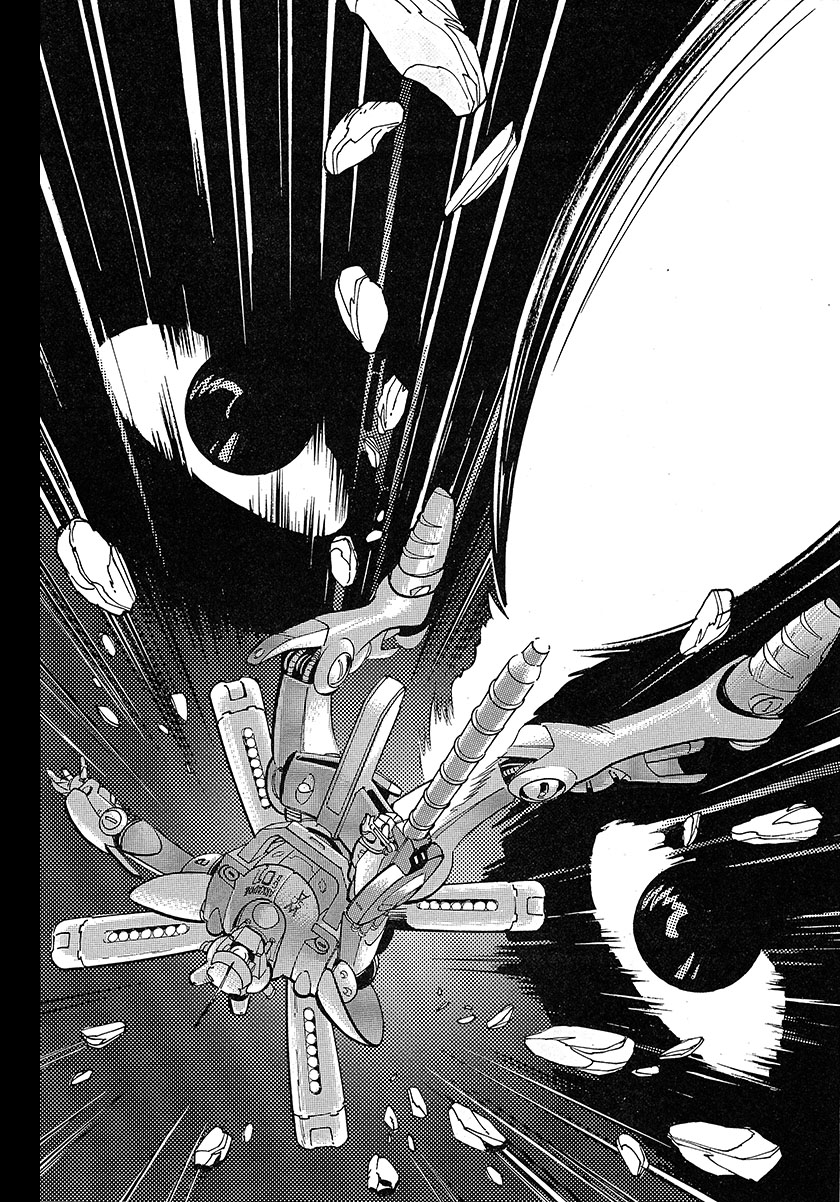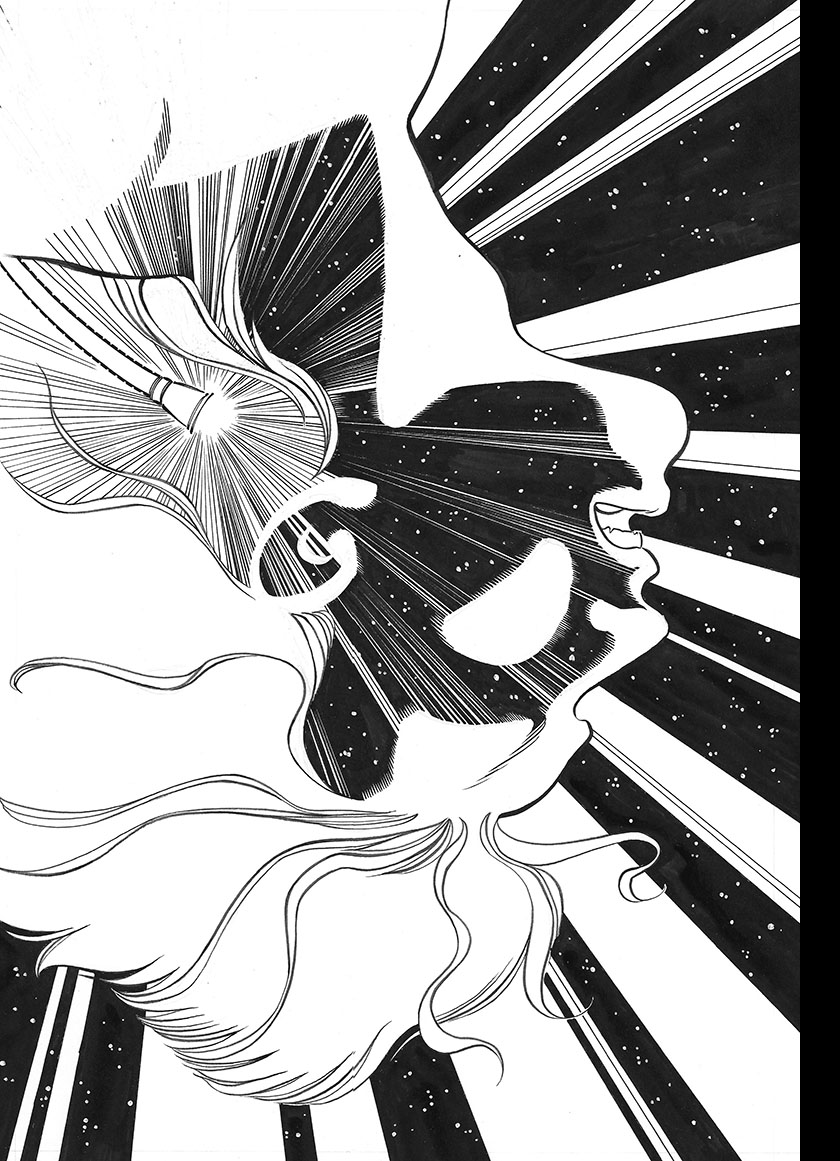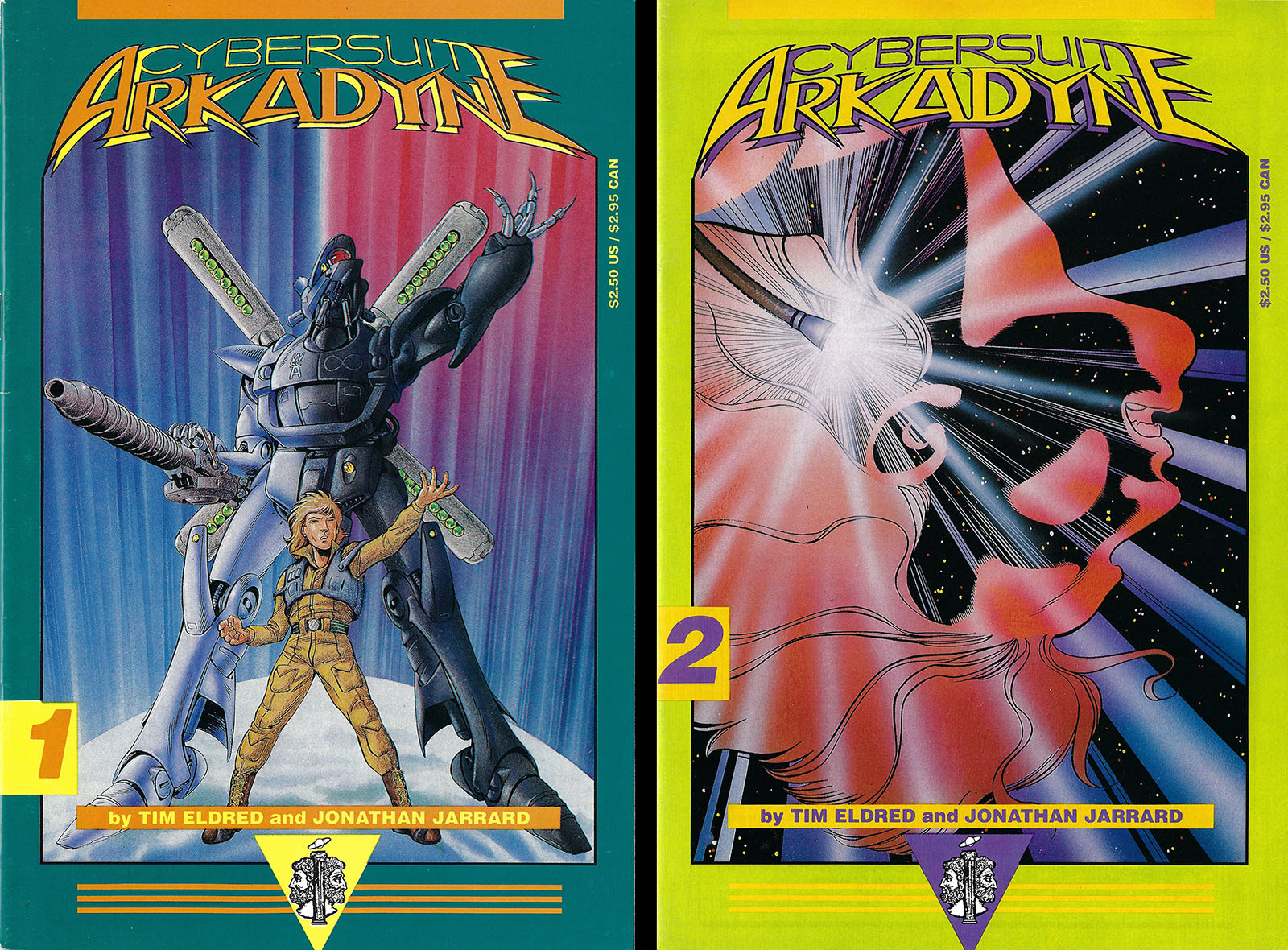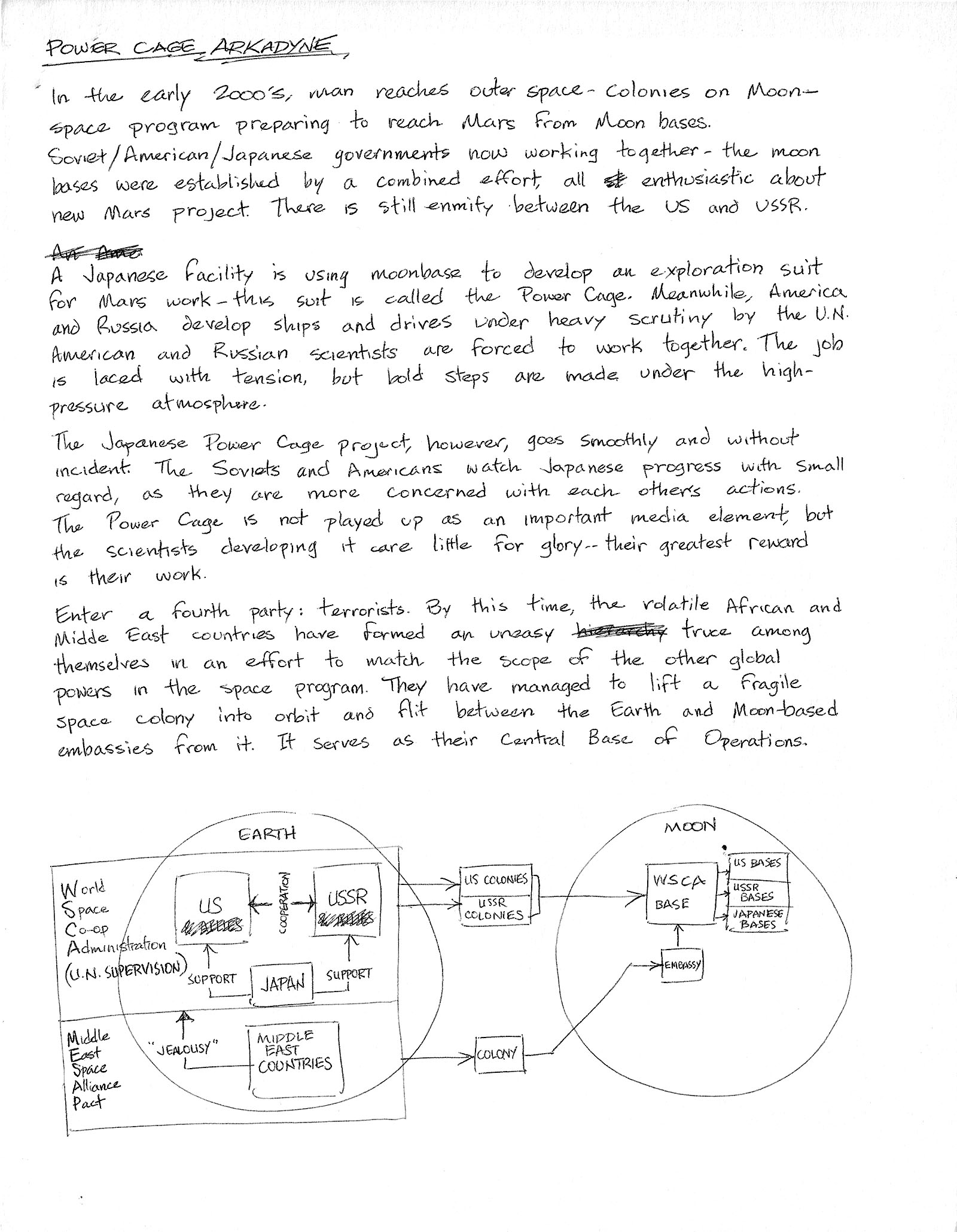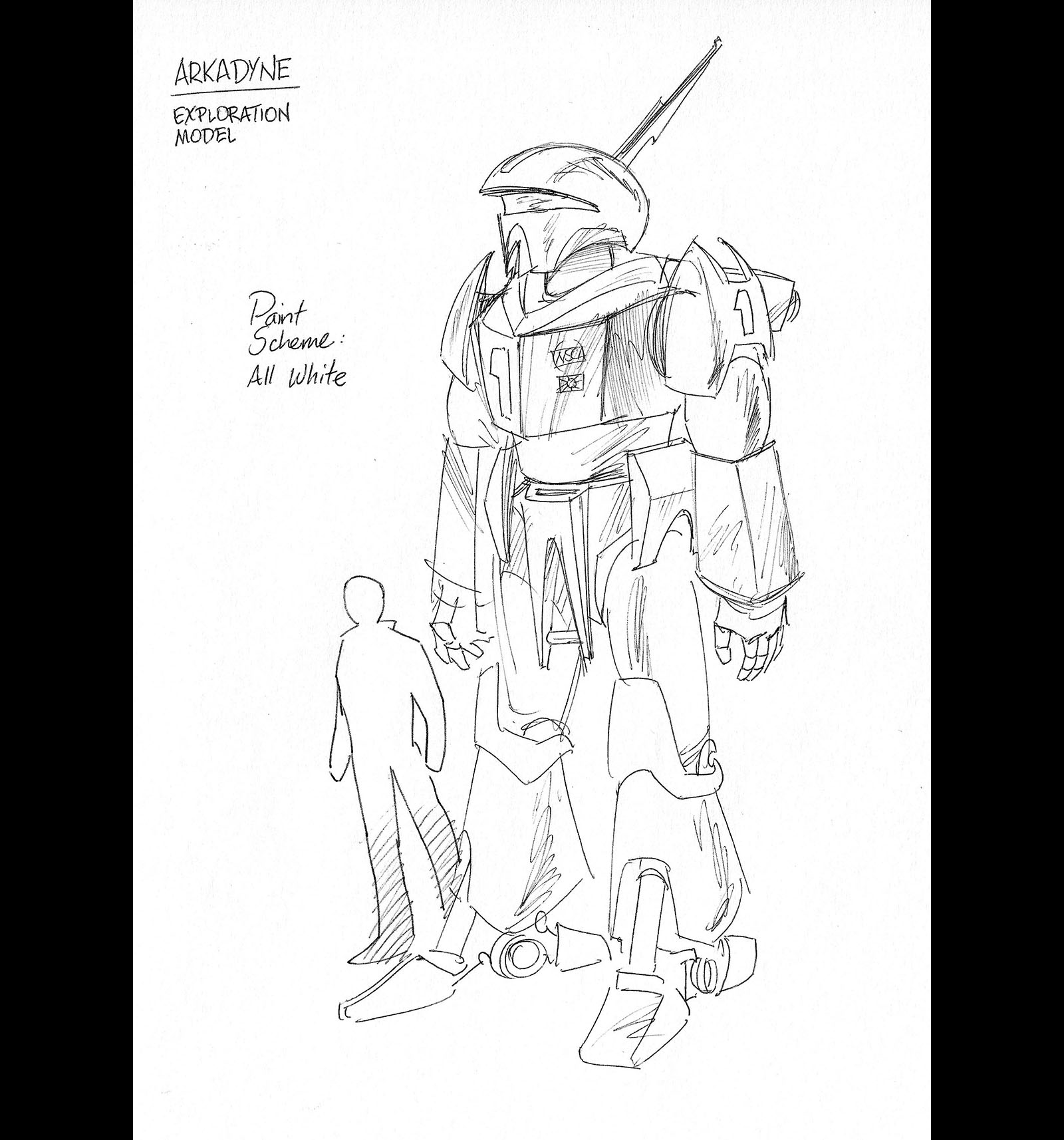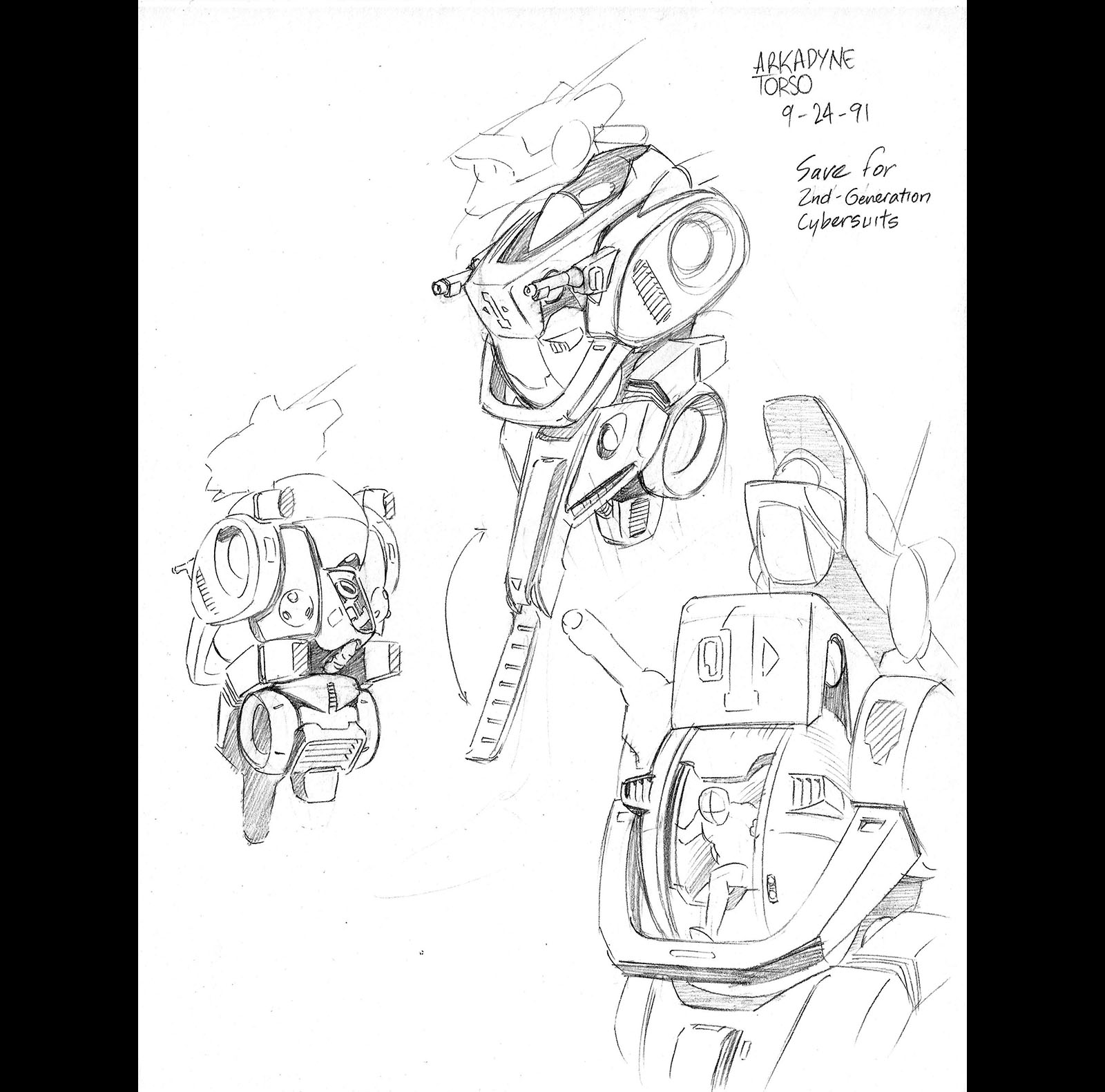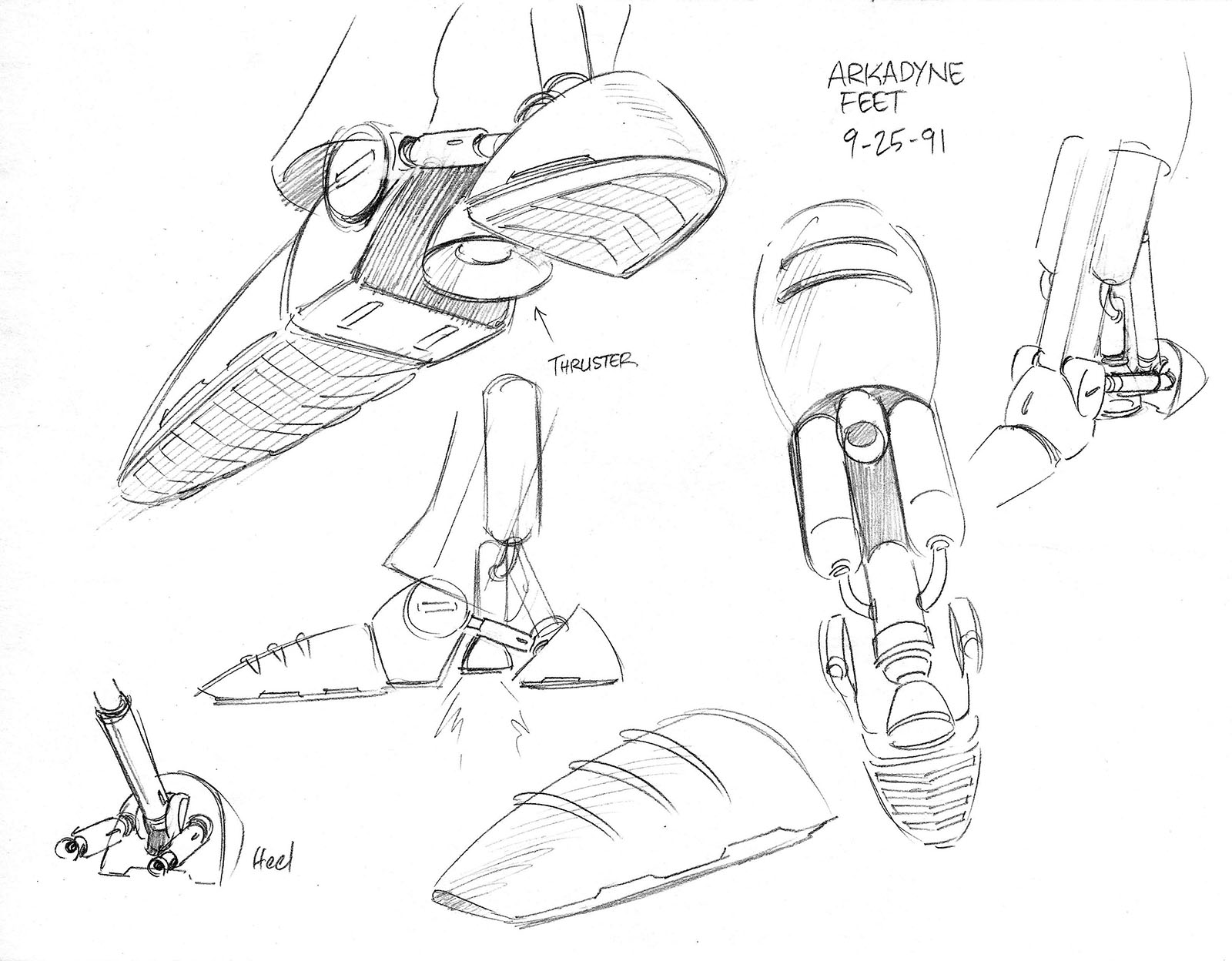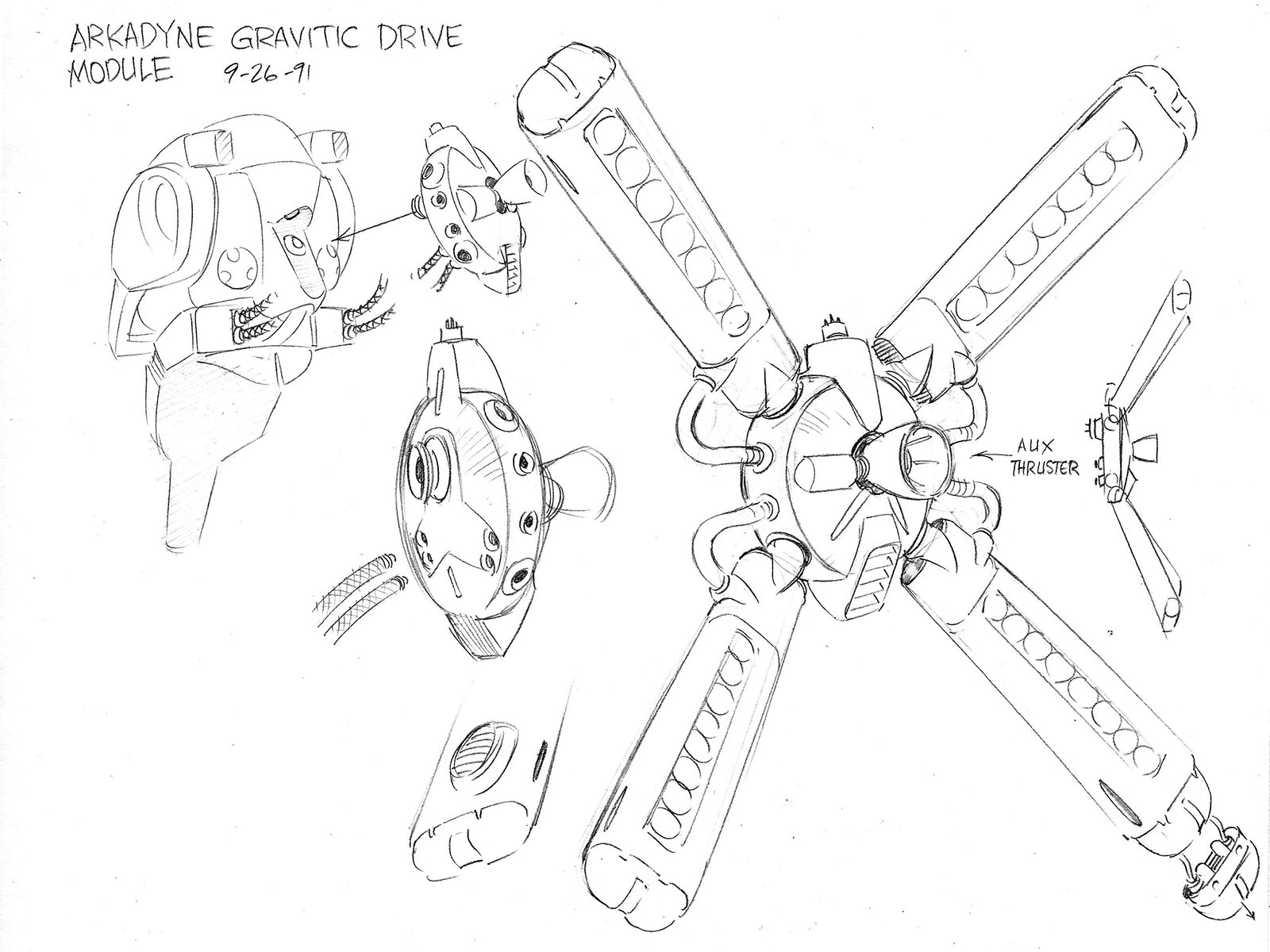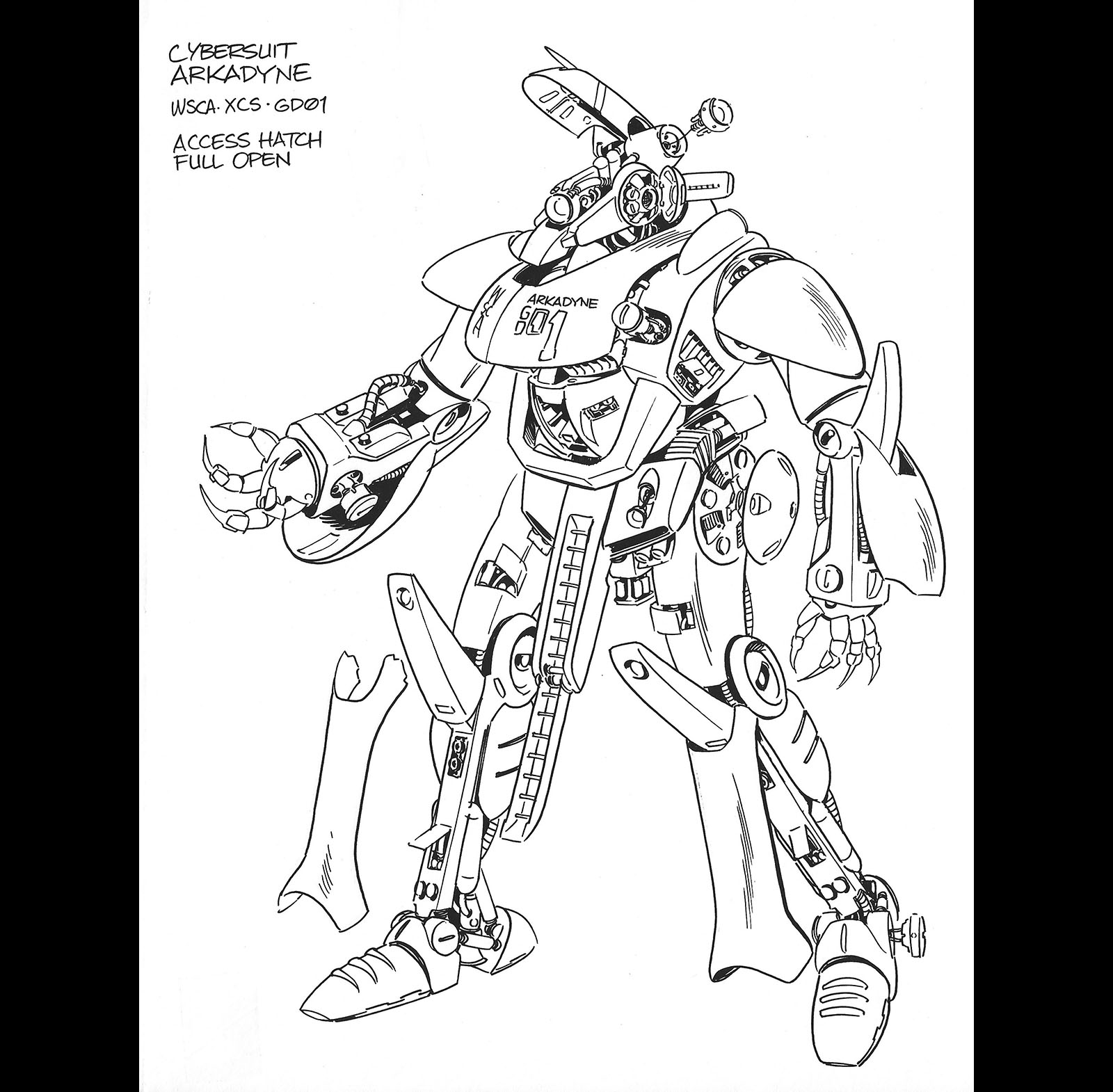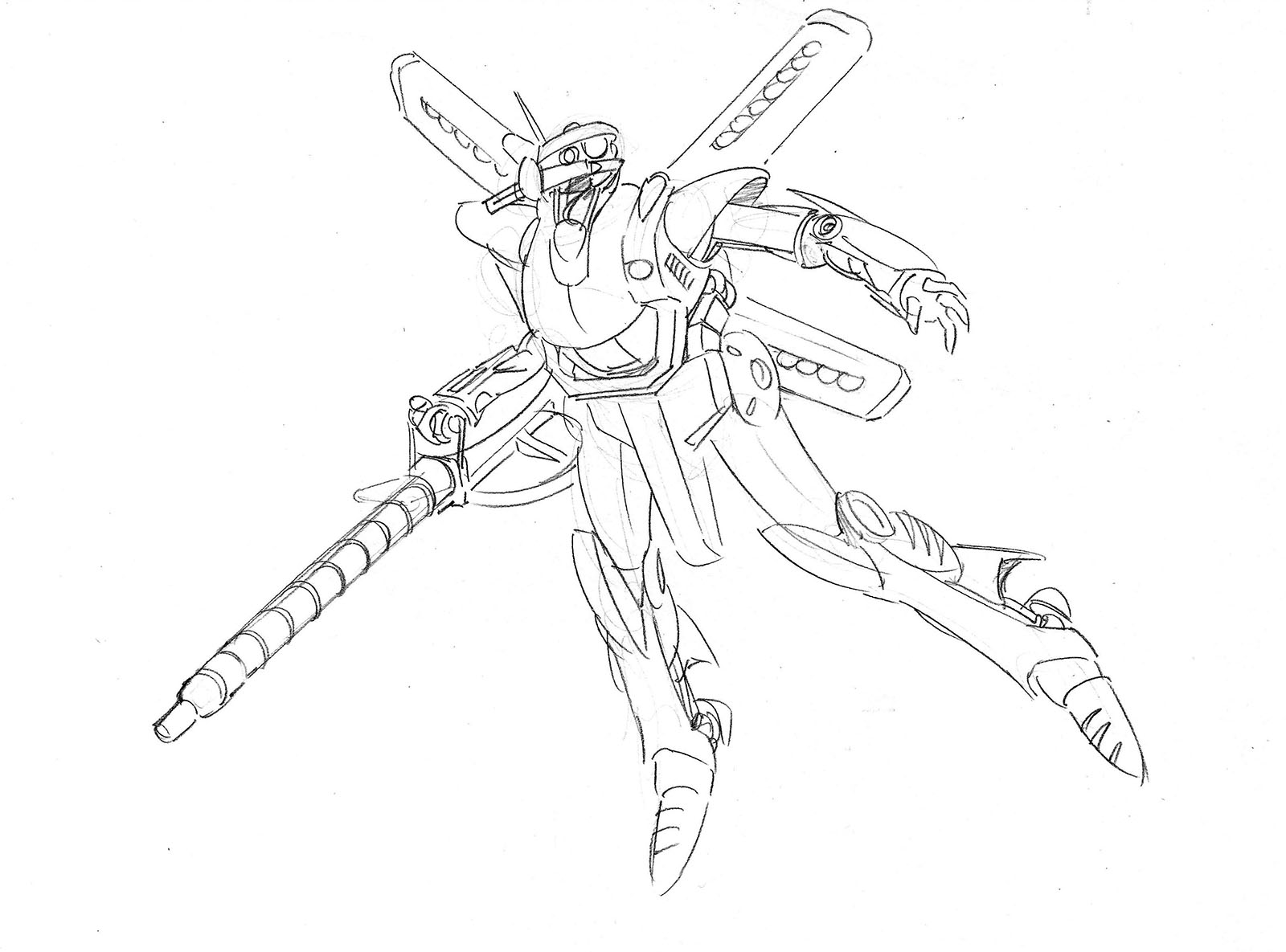Cybersuit Arkadyne Part 1, 1992
Sometimes I gotta salute younger me. That guy kept taking punches and getting right back up to take more. By “punches” I mean “cancellations.” One ambitious comic book project after another slammed headfirst into a wall of ambivalence, and no matter how much I wished for a break, they’d get cancelled before they could finish. Unless (of course) they were adaptations of something else, pre-approved by a larger audience. That was a different story.
But I hung in there, determined that one day I’d get an original idea over the finish line. Chaser Platoon barely made it. Broid and Ground Zero did not (which was one of my main reasons for setting up this website, so I could finish them here). My next attempt to crack that seemingly uncrackable nut was a miniseries titled Cybersuit Arkadyne.
The idea first crept into my head all the way back in 1987, two years before my full-time comics career began. As a big-time mecha anime fan, I was naturally thinking about how to involve giant robots in science-fiction stories. The name “Arkadyne” was just a combination of syllables that sounded cool, but the style guide for mecha anime dictated that it needed a 2-word designation in front of it. So I came up with “Power Cage,” suggesting that it could give a pilot a lot of power, but the tradeoff was that you’d be trapped by it. Power was its own form of enslavement. As I developed the mechanics of the robot a bit more and decided to take a neural interface route, I thought “Cyber Suit” was a better choice. Thus, Cybersuit Arkadyne.
The story was set in space a few decades in the future with political factions and bureaucracy a la Mobile Suit Gundam. A fledgling test pilot assigned to an experimental Cyber Suit would plunge into this multi-layered world and find many more challenges than he bargained for. The story structure dictated that it be split into two parts, 6 and 4 issues consecutively, for a total of ten.
At the time, it didn’t seem like too much to ask for readers to try something of that length. Boy, did I have a lot to learn about the marketplace. If you wanted to push something original through the tiny gap between its hostility and its apathy, you were asking for a miracle. But more about that later.
I don’t remember if I got around to pitching Arkadyne to Eternity in 1989. If I did, I’m sure their answer was to wait and see how Broid performed, so it went into the “maybe someday” file. As I explained in my writeup for Captain Harlock: Fall of the Empire, I was shook in summer 1991 when my editor at Eternity told me they were going to take a break after that series was over. I still had Robotech: Invid War to work on, but I needed two monthly projects to pay the bills and Eternity had no ready replacement for Harlock. To my surprise, the replacement came from a Canadian company called Ianus Publications.
Now known as Dream Pod 9, they formed in 1987 to launch an anime fan magazine called Protoculture Addicts. It started out with a Robotech focus and then broadened in scope. Later, they added a companion magazine called Mecha Press. I got in touch with them by mail and was delighted to find they were already following my work with interest. They asked me if I had any other projects in my “maybe someday” file. Arkadyne was right in their wheelhouse, since they were all mecha heads like me and were on the lookout for a property they could turn into a mecha-themed role-playing game.
Jumping forward a bit, they began their transition into a game company in 1992 when they got hooked up with Cyberpunk 2020 and Mekton II. In 1994, they began developing Heavy Gear, a series that would cross my path pretty significantly in 2000. But that’s a whole other story, told here. Let’s get back to 1991.
Now that someone was interested in publishing Arkadyne, I had the project I needed to replace Captain Harlock on my schedule when it finished in October. I’d been penciling comics non-stop for a little over two years by then, and lettering & inking them for almost half that time, so I could handle all the art from top to bottom. My figure drawing was still evolving, but my inking style was getting stronger by the day. Arkadyne was going to give me plenty of new challenges to chew on, and I couldn’t wait to get started.
Here’s an introduction I wrote for the series in early 1992 that fills in some more of the “making of” story…
By the year 2052, mankind’s expansion into space has encompassed the moon and Mars, and brought humans to the vast resources of the asteroid belt. There, civilian mining vessels have come under attack by a mysterious enemy that attacks and disappears without a trace. WSCA (World Space Cooperative Administration) has initiated the Cybersuit Project, a countermeasure that was supposed to be top secret … until, when in its delicate first stages, its crew is attacked by the belt raiders in Earth orbit and saved by another, fully-operational Cybersuit!
Glenn Taback is the first pilot chosen to operate Arkadyne, a process that links him directly to the machine via cybernetic implant. Using an experimental system called the Gravitic Drive, he will be able to outfly and outfight anything imaginable … except himself.
Cybersuit Arkadyne is a drama with classic science fiction underpinnings that will have special appeal for anime fans in general and mecha fans in particular. I can say this because I fit into this category. Also because I created it.
Having been an anime fan since 1984, and an amateur comics artist even longer, I gradually began to combine the two interests. This culminated in my break into the professional comic market in 1989 when Eternity comics assigned to me the pencilling duties on the Lensman series, and this gave way to my second project, Broid. Since then, it has been my pleasure to work on the Captain Harlock series and take a step into the world of Robotech, thus completing my “tour” of Eternity’s anime triumvirate. Where to go from here? Simple — back to one of my own universes.
Unknown to me, my friends at Ianus Publications were watching my progress, and they had begun to wonder what other tricks I had up my sleeve. My only move was to send them an address correction for their mailing list one day, and the wheels began to turn.
Arkadyne was a book I’d had in mind even before inventing Broid in 1987. Back then, it was only a stream of loosely-constructed paragraphs and concepts. But the overall “high concept” (as we say in the comics biz) was set in stone from the beginning. Revealing it now would ruin the comic for you, so just let me say that it was strong enough to reignite my enthusiasm over five years later. Fortunately for me, Ianus felt the same.
In 1990, my initial story ideas were given a shot in the arm by my friend and co-writer Jonathan Jarrard. An astute SF fan and technical writer, Jonathan wrote for me an extensive second draft that yielded a story ten times as engaging. It was like starting all over again, and my enthusiasm soared. The excitement we have for the project will definitely show this March when Cybersuit Arkadyne #1 hits the stands.
I can’t overstate how important it was to get Jonathan involved with the project. When I came to the conclusion that I needed a writing partner who could bring more science to the science-fiction, I invited him to step on board. We first met when I took command of an anime club in Ann Arbor, Michigan in 1988. As a longtime SF reader with deep technical knowledge, he filled in some critical gaps and made Arkadyne a much deeper story. He had no experience writing scripts, but we each brought our own expertise to the work and created something greater than the sum of its parts.
Presented here are the first two issues from cover to cover. The “making of” story will continue in Part 2.
Issue 1: Visions
Production period: October/November 1991
Published March 1992
Issue 2: Enigma
Production period: November/December 1991
Published April 1992
Preproduction Gallery
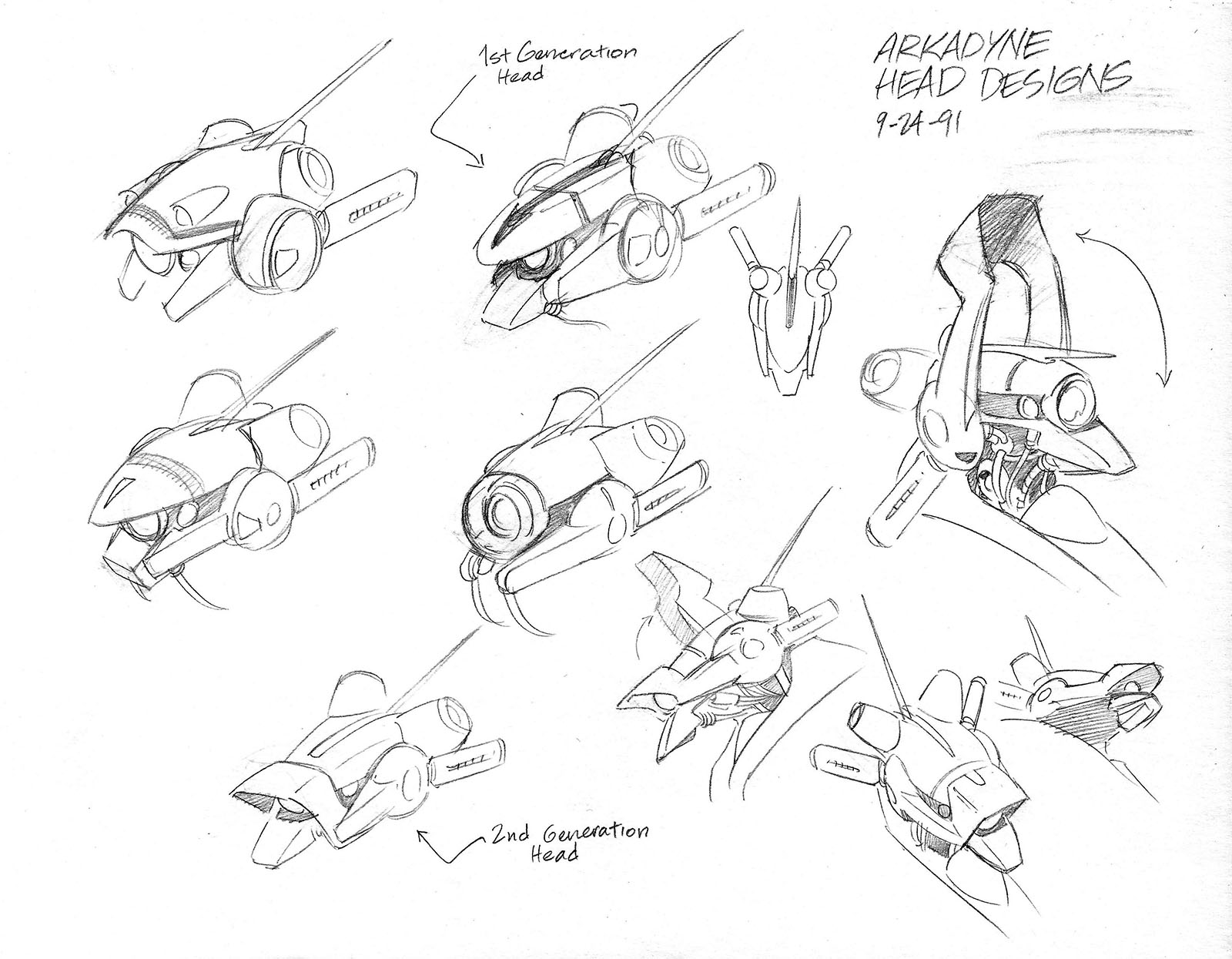
When I started revising the Arkadyne design in September 1991, I had a lot more experience to bring to the task. ordinarly I would try to establish an overall body shape first, then work inward to find the details. This time I did the opposite, developing the components separately.

The first time I “saw” the finished design was when I “assembled” the components into this drawing, and was amazed at how unified and handsome it looked. The only improvement I felt it needed at this point was to make the legs a bit longer.


